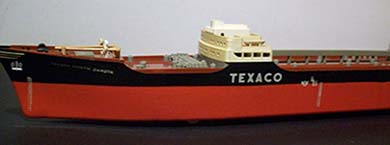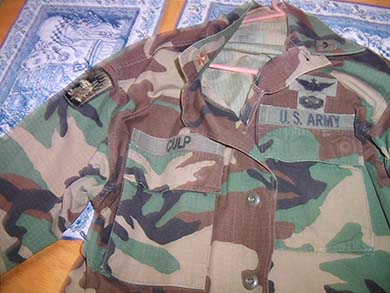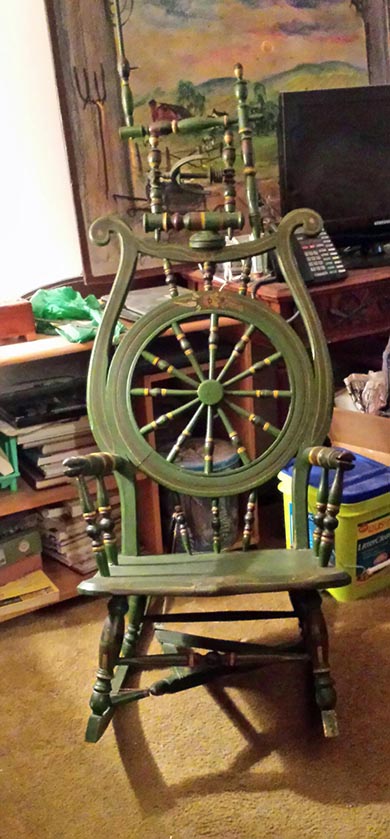 |
|
|||
 |
 |
|||
Copyright © Harry Rinker, LLC 2017 Questions
and Answers
QUESTION: I have a plastic model of the “SS Texaco North Dakota” that was sold at Texaco stations in the 1950s, a time when gas stations pumped your gas, washed the windows, and checked the oil. I do not have the box. What is my model worth? – JK, Timberlake, OH, Email Question 
ANSWER: Texaco’s fleet of oil tankers included five North Dakota class tankers. The “SS Texaco North Dakota” (81-Blanco) was built in 1953 by Newport News SB. Its gross tonnage was 12,789 tons. On October 3, 1973 while traversing the Gulf of Mexico, an explosion in the pump room killed three crew members. On August 21, 1980, the ship collided with Chevron Oil Co. Platform A (Eugene Island, Block 361) in the Gulf or Mexico. Texaco offered its plastic model of the “SS Texaco North Dakota” during the 1961 holiday season. The 27-inch model was highly detailed and used “C” batteries. The box read “HERE IS YOUR TEXACO [LOGO] TOY TANKER / IT’S MOTORIZED … BATTERIES INCLUDED.” The model contained a radar dish, which was easily broken and lost. It is missing from your model. The rudder worked. The upper deck contained the motor control. The model was made by AMF WEN-MAC. The complete unit consists of the ship, box, cardboard packing, and booklet. On eBay, the number of individuals selling parts almost equals those selling the ship model. One eBay seller was asking $11.50 for three vent pieces, another the same price for the rudder, and a third $41.49 for the bridge cap. Checking WorthPoint.com, I found complete examples that closed at $778.99 (2017), $499.99 (2016), and $424.99 (2017). The complete model appears to be increasing in value. According to WorthPoint.com, complete models sold for $350.00 (2013, 2012, 2010, 2007), $330 (2007), and $306.89 (2013). Examples in displayable condition but missing a part or two are in found in quantity on the internet. Asking prices range from $20.00 to $75.00. A conservative secondary market value is between $35.00 and $40.00. QUESTION: I have a World War II infantry jacket that I bought back in the 1970s at an Army Navy store. It is in brand new condition. Some of the patches on it are: (1) a firebird emblem and a mountain with crossing knives on the sleeve: (2) a brown leaf inside the collar; (3) a brown baton with wings, US Army with a balloon with wings, and a badge with star and wings on the front. There appears to be no rank insignia. The label inside the jacket reads: “medium long, height 71 to 75 / chest 37 to 41 / stock #8415.01.184.1331, nato/size 08090/9404. ”I do not remember what I paid for it. What information can you provide? – BR, State College, PA, Email Question 
ANSWER: I sent your email and the pictures accompanying it to my son Harry Jr., recently retired from the US Army with 31 years of service. He was able to identify the uniform and its insignia. Memory is a funny thing. The uniform is not from World War II. This green and brown camouflage jacket is from a BDU (Battle Dress Uniform) summer weight uniform that was used by the US military from 1985 to 2001. Hence, you could not have bought it used in the 1970s. As an aside, I have a full uniform from the same period hanging in my Kentwood, Michigan closet, a gift from Harry Jr. The leaf inside the right collar is the designation for a Major. By this time, rank information was no longer worn on the outside of battle uniforms, thus making it harder for the enemy to identify officers. The left shoulder patch identifies as a member of the 10th Mountain Division, the unit to which the soldier was currently assigned. The left collar badge indicates the Aviation branch. The patches above the pocket indicate the Major was Airborne and Senior Aviator qualified. The right shoulder patch is for the 12th Aviation Brigade, the unit to which he was assigned during deployment to a combat zone. A military uniform with all the patches intact is a nice find. The secondary market retail price is between $15.00 and $20.00. QUESTION: I recently acquired a little metal toy plane. The body is orange and wings green. The tail fin and all three wheels and tires are long gone. A buddy told me that sometimes date and manufacture information is on the tires or wheels. Can you identify the maker and what suggestions do you have for restoring the missing pieces? – KT, Madisonville, KY, Email Question 
ANSWER: I recently asked a music box restorer to share with me a piece of advice he would provide someone wishing to buy an antique music box. He responded I should, “buy a fully restored box and not one that needed restoration.” His observation is correct. “Wounded warriors,” such as the example you purchased, usually cost more to restore than they are worth following the restoration. All Metal Products Company, located in Wyandotte, Michigan, is the manufacturer of your pressed steel model airplane. Its inexpensive pressed metal toys were marketed under the Wyandotte brand name. The company was founded in 1920s, specializing initially in air rifles, toy guns, and water pistols. Production of air rifles was discontinued in 1929 as the company focused on cap guns, girls’ toys, toy vehicles, and a line of lithographed tin toys, introduced in 1936. During World War II, Wyandotte produced wood and cardboard toys as well as block clips for the MI Garand rifle. Following WWII, the company produced die cast and plastic toys to compete in the dime store market. All Metal bought Hafner Manufacturing Company, a maker of clockwork metal toys including toy trains, in 1946. Facing a financial crisis in 1956, All Metal Product Company sold its product line to Louis Marx and Company. [For a more detailed history, see: https://en.wikipedia.org/wiki/All_Metal_Products_ Companyen.wikipedia.org/wiki/All_Metal_Products_Company] Your Wyandotte plane was produced in the mid- to late 1930s. There are several variations of body paint and markings. I especially like the example with a purple body and brown wings. My first restoration thought is to buy a badly damaged example that still retains the rear tail fin and wheels with tires swap them out. Flea markets are a possible source. I found a complete example on eBay. The seller was asking $140.40 reduced from $195.00 or “Best offer.” The asking price for other complete examples on eBay range from $100.00 to $125.00. Obtain a copy of “Antique Toy World,” American’s leading periodical focusing on antique and collectible toys. (www.antiquetoyworld.com). The magazine contains advertisements from companies selling replacement parts for toys. In addition, the magazine contains advertisements for toy shows. Replacement part dealers are regular exhibitors at these shows. Given the secondary market resale value of your Wyandotte airplane, I am not recommending sending it to a professional toy restorer. The cost will be prohibitive. QUESTION: I have an old chair made out of parts from an antique flax spinning wheel. It is painted green. I paid $750.00 for it at auction. The underbidder was a prominent local auctioneer. Since I bought it, I have seen other examples, many unpainted, several priced higher than what I paid. What can you tell me about the history of my chair? – IJ, Reading, PA, Email Question 
ANSWER: Your comment supports an antiques and collectibles truism: “you do not see something until you start looking for it.” Chairs made from flax spinning wheel parts in the late nineteenth and early twentieth centuries are one of the first examples of the “Cash from Trash” movement, today called repurposing. There is a large variety of designs. I found a picture of a rocker that had a full spinning wheel back and half spinning wheel arms. Judging from the color of the paint on your chair, I suspect it was added in the late 1920s or early 1930s. These chairs are considered by some to be folk art or folk art revival products. This attribution exists only to drive up prices paid by unsophisticated buyers. At best, the chairs are novelties. You paid a fair price, albeit close to full retail. Auction fever is a commonly found antiques and collectibles disease. Harry L. Rinker welcomes questions from readers about
collectibles, those mass-produced items from the twentieth and twenty-first centuries.
Selected letters will be answered in this column.
Harry cannot provide personal answers.
Photos and other material submitted cannot be
returned.
Send your questions to: Rinker on Collectibles, 5955 Mill
Point Court SE, Kentwood, MI 49512.
You also can e-mail your questions to
harrylrinker@aol.com.
Only e-mails containing a full name and mailing address
will be considered.
You can listen
and participate in
WHATCHA GOT?, Harry’s
antiques and collectibles radio call-in show, on Sunday mornings between 8:00 AM
and 10:00 AM Eastern Time.
If you
cannot find it on a station in your area,
WHATCHA GOT?
streams live on the Internet at www.gcnlive.com.
SELL, KEEP OR TOSS?: HOW TO DOWNSIZE A HOME,
SETTLE AN ESTATE, AND APPRAISE PERSONAL PROPERTY
(House of Collectibles, an imprint of Random House Information Group, $17.99),
Harry’s latest book, is available at your favorite bookstore and via
www.harryrinker.com.
|
||||